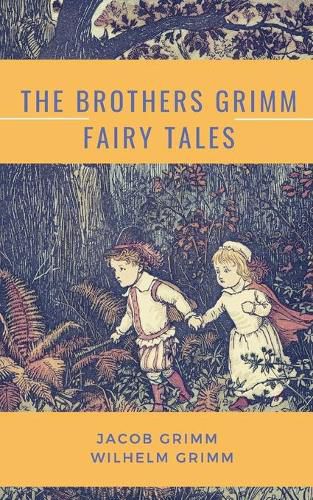Readings Newsletter
Become a Readings Member to make your shopping experience even easier.
Sign in or sign up for free!
You’re not far away from qualifying for FREE standard shipping within Australia
You’ve qualified for FREE standard shipping within Australia
The cart is loading…






This title is printed to order. This book may have been self-published. If so, we cannot guarantee the quality of the content. In the main most books will have gone through the editing process however some may not. We therefore suggest that you be aware of this before ordering this book. If in doubt check either the author or publisher’s details as we are unable to accept any returns unless they are faulty. Please contact us if you have any questions.
Grimm’s Fairy Tales is a collection of fairy tales first published in 1812 by the Grimm brothers, Jacob and Wilhelm. The collection is commonly known in English as Grimms’ Fairy Tales. The first volume of the first edition was published in 1812, containing 86 stories; the second volume of 70 stories followed in 1815. For the second edition, two volumes were issued in 1819 and a third in 1822, totalling 170 tales. The third edition appeared in 1837; fourth edition, 1840; fifth edition, 1843; sixth edition, 1850; seventh edition, 1857. Stories were added, and also subtracted, from one edition to the next, until the seventh held 211 tales. All editions were extensively illustrated, first by Philipp Grot Johann and, after his death in 1892, by German illustrator Robert Leinweber. The first volumes were much criticized because, although they were called Children’s Tales , they were not regarded as suitable for children, both for the scholarly information included and the subject matter.Many changes through the editions - such as turning the wicked mother of the first edition in Snow White and Hansel and Gretel (shown in original Grimm stories as Hansel and Grethel) to a stepmother, were probably made with an eye to such suitability. They removed sexual references-such as Rapunzel’s innocently asking why her dress was getting tight around her belly, and thus naively revealing to the fairy her pregnancy and the prince’s visits-but, in many respects, violence, particularly when punishing villains, was increased.
$9.00 standard shipping within Australia
FREE standard shipping within Australia for orders over $100.00
Express & International shipping calculated at checkout
This title is printed to order. This book may have been self-published. If so, we cannot guarantee the quality of the content. In the main most books will have gone through the editing process however some may not. We therefore suggest that you be aware of this before ordering this book. If in doubt check either the author or publisher’s details as we are unable to accept any returns unless they are faulty. Please contact us if you have any questions.
Grimm’s Fairy Tales is a collection of fairy tales first published in 1812 by the Grimm brothers, Jacob and Wilhelm. The collection is commonly known in English as Grimms’ Fairy Tales. The first volume of the first edition was published in 1812, containing 86 stories; the second volume of 70 stories followed in 1815. For the second edition, two volumes were issued in 1819 and a third in 1822, totalling 170 tales. The third edition appeared in 1837; fourth edition, 1840; fifth edition, 1843; sixth edition, 1850; seventh edition, 1857. Stories were added, and also subtracted, from one edition to the next, until the seventh held 211 tales. All editions were extensively illustrated, first by Philipp Grot Johann and, after his death in 1892, by German illustrator Robert Leinweber. The first volumes were much criticized because, although they were called Children’s Tales , they were not regarded as suitable for children, both for the scholarly information included and the subject matter.Many changes through the editions - such as turning the wicked mother of the first edition in Snow White and Hansel and Gretel (shown in original Grimm stories as Hansel and Grethel) to a stepmother, were probably made with an eye to such suitability. They removed sexual references-such as Rapunzel’s innocently asking why her dress was getting tight around her belly, and thus naively revealing to the fairy her pregnancy and the prince’s visits-but, in many respects, violence, particularly when punishing villains, was increased.